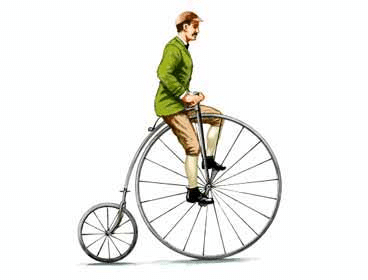Year 5 Exam > Year 5 Tests > Discoveries & Inventions - Year 5 MCQ
Discoveries & Inventions - Year 5 MCQ
Test Description
20 Questions MCQ Test - Discoveries & Inventions
Discoveries & Inventions for Year 5 2025 is part of Year 5 preparation. The Discoveries & Inventions questions and answers have been prepared
according to the Year 5 exam syllabus.The Discoveries & Inventions MCQs are made for Year 5 2025 Exam.
Find important definitions, questions, notes, meanings, examples, exercises, MCQs and online tests for Discoveries & Inventions below.
Solutions of Discoveries & Inventions questions in English are available as part of our course for Year 5 & Discoveries & Inventions solutions in
Hindi for Year 5 course.
Download more important topics, notes, lectures and mock test series for Year 5 Exam by signing up for free. Attempt Discoveries & Inventions | 20 questions in 10 minutes | Mock test for Year 5 preparation | Free important questions MCQ to study for Year 5 Exam | Download free PDF with solutions
Discoveries & Inventions - Question 1
What is the name of this system, developed originally to detect submarines but now used to monitor unborn babies?
Detailed Solution for Discoveries & Inventions - Question 1
Discoveries & Inventions - Question 2
Who shocked many people in 1543 when he suggested that the Earth moved around the Sun?
Detailed Solution for Discoveries & Inventions - Question 2
Discoveries & Inventions - Question 3
The mouthwash Listerine is named after the surgeon, Joseph Lister. Why is Lister famous?
Detailed Solution for Discoveries & Inventions - Question 3
Discoveries & Inventions - Question 4
In what year was the first working integrated circuit or microchip made?
Detailed Solution for Discoveries & Inventions - Question 4
Detailed Solution for Discoveries & Inventions - Question 5
Discoveries & Inventions - Question 6
Which civilization developed the process of making paper?
Detailed Solution for Discoveries & Inventions - Question 6
Discoveries & Inventions - Question 7
Which branch of Scotland Yard was set up in 1901 to make use of a scientific discovery in crime cases?
Detailed Solution for Discoveries & Inventions - Question 7
Discoveries & Inventions - Question 8
Who discovered that the heart pumps blood around the body?
Detailed Solution for Discoveries & Inventions - Question 8
Discoveries & Inventions - Question 10
What is Archimedes supposed to have shouted when he realized something could be weighed by measuring the amount of water it displaced?
Detailed Solution for Discoveries & Inventions - Question 10
Discoveries & Inventions - Question 11
Who developed the Theory of Relativity, which is summed up in the equation E=mc ?
Detailed Solution for Discoveries & Inventions - Question 11
Discoveries & Inventions - Question 12
What is the chemical name for "Laughing Gas", which Sir Humphrey Davy found made people less aware of pain?
Detailed Solution for Discoveries & Inventions - Question 12
Discoveries & Inventions - Question 13
Who was the inventor of dynamite, who also founded international prizes, including ones for science?
Detailed Solution for Discoveries & Inventions - Question 13
Detailed Solution for Discoveries & Inventions - Question 14
Discoveries & Inventions - Question 15
What set of huge stones may have been created as an early calendar?
Detailed Solution for Discoveries & Inventions - Question 15
Discoveries & Inventions - Question 16
This invention revolutionized communication during the 15th century CE. What is it?


Discoveries & Inventions - Question 17
What was the name of the first artificial satellite to orbit the Earth, which was launched by the USSR in 1957?
Detailed Solution for Discoveries & Inventions - Question 17
Discoveries & Inventions - Question 18
What new branch of scientific knowledge was developed by Gregor Mendel in the 19th century, through his study of pea plants?
Detailed Solution for Discoveries & Inventions - Question 18
Discoveries & Inventions - Question 19
What is the name for the scientific study of fossils and prehistoric life?
Detailed Solution for Discoveries & Inventions - Question 19
Discoveries & Inventions - Question 20
What theme park attraction was first seen at the 1893 World's Fair, held in Chicago?
Detailed Solution for Discoveries & Inventions - Question 20
Information about Discoveries & Inventions Page
In this test you can find the Exam questions for Discoveries & Inventions solved & explained in the simplest way possible.
Besides giving Questions and answers for Discoveries & Inventions, EduRev gives you an ample number of Online tests for practice
Download as PDF















